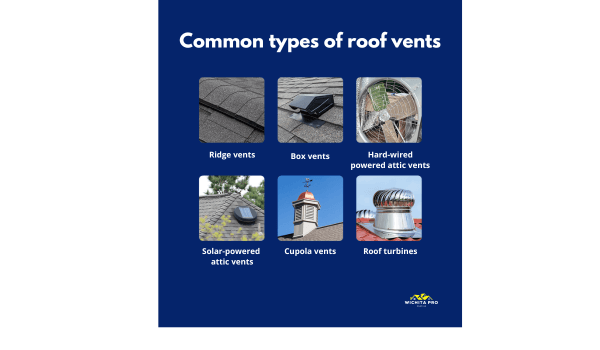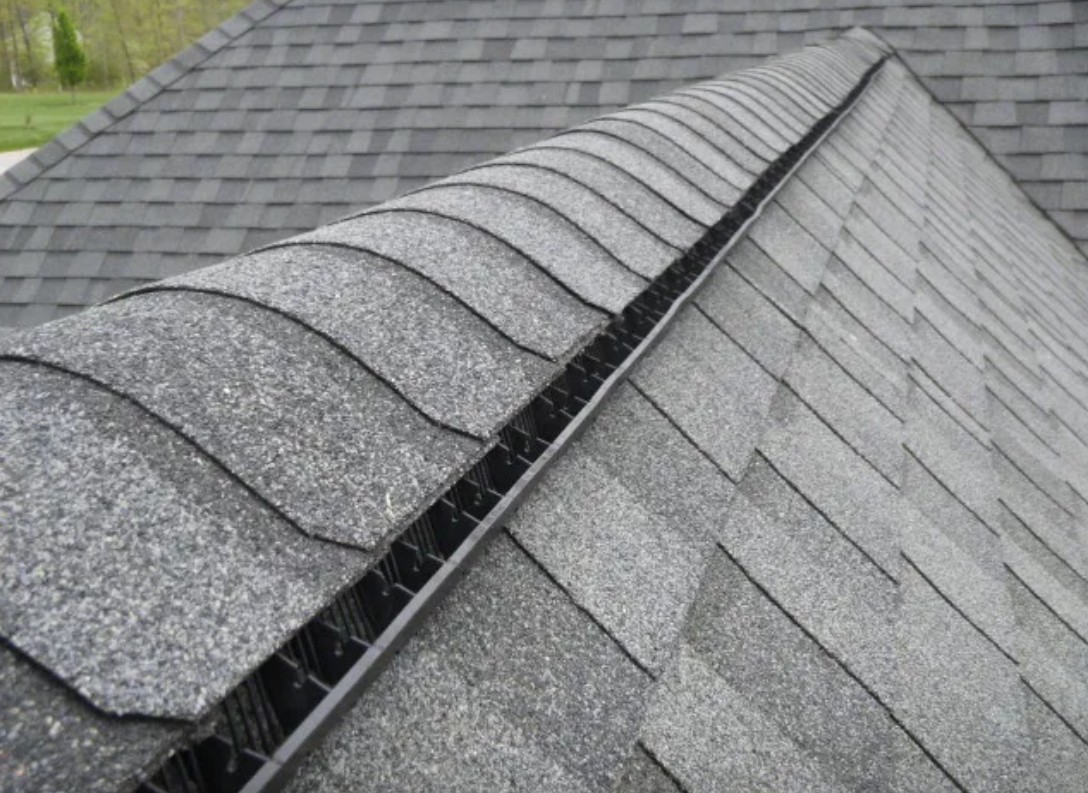
The most common myths about roof vents (debunked!)

Attic ventilation might not be the first thing on your mind when you think of home improvements, but it plays a massive role in keeping your house comfortable and your roof in top shape. A well-structured roof vent system not only helps regulate temperature and humidity but also extends the life of your roofing materials. Despite all these perks, there are plenty of myths floating around about how to properly ventilate an attic. Let?s clear up the confusion and uncover the real facts behind each myth, so you know exactly what to expect when installing or upgrading your attic ventilation.
Myth #1: ?More Attic Ventilation Is Always Better?
It?s easy to assume that if some ventilation is good, more has to be better. But the truth is, you can have too many vents, or even the wrong mix of vents, which ends up working against you.
The Fact:
Proper attic ventilation must be balanced and sized to your home?s unique layout. Jamming in more vents?or mixing incompatible types?can disrupt airflow and trap hot, humid air inside. You can also unintentionally suck climate-controlled air out of your living space. Stick to a system that?s correctly calculated for your attic?s square footage and designed to move hot air up and out without going overboard.
Myth #2: ?Having a Roof Vent Guarantees Good Ventilation?
Just spotting a roof vent poking out of your shingles doesn?t mean it?s doing its job. You might think your ventilation is great simply because you can see the vents.

The Fact:
To work right, attic ventilation calls for the correct combination of intake and exhaust vents positioned where they can draw in fresh air and push out stale, hot air. Different vents also need to be in harmony?mixing active vents (like a fan-driven roof air ventilator) with passive vents can create clashing airflow patterns. If you?re unsure, consult a pro to see if your venting layout is really getting the job done.
Read More: Understanding Roof Ventilation: Essential Tips for Wichita Homeowners
Myth #3: ?Pests Can Sneak In Through Roof Vents?
Nobody wants raccoons, rodents, or insects setting up shop in their home. One common fear is that a roof vent leaves a big open door for pests.
The Fact:
A properly installed and sealed roof exhaust vent isn?t a freeway for critters. Rodents usually can?t squeeze in unless the vent is torn or not sealed well. Insects may creep through certain vents, but if your attic doesn?t offer food or water, they?ll move on. Trimming back branches and shrubs near your roof also helps discourage unwanted visitors. As for small amounts of rain or snow, your vents should be built to handle natural elements without letting moisture become a major problem.
Myth #4: ?Roof Vents Are Only Important in Hot Climates?
Some homeowners assume that if they live in a place with chilly weather, ventilation doesn?t matter much.
The Fact:
Attic ventilation is crucial in every climate. In cold regions, it helps prevent moisture buildup. Without proper airflow, warm air from your home can rise into the attic, mix with cold external temperatures, and cause condensation. This leads to mold, wood rot, and even ice dams on your roof. Good ventilation ensures your attic stays close to the outdoor temperature, which keeps roofing materials healthier year-round.
Myth #5: ?Any Ventilation System Will Do?
A vent is a vent, right? Some folks think all they need is something that moves air out of the attic and they?re good to go.
The Fact:
Different roof ventilation types?such as ridge vents, gable vents, static vents, and powered vents?have unique benefits and requirements. Not all vent styles work well on steep roofs, low-pitched roofs, or certain materials. For instance, many homeowners love ridge vents because they require minimal upkeep and fit well with common roofing materials like shingles or metal. But they?re not a guaranteed fit for every single roof. Proper installation also matters. Even the best vent on the market is useless if it?s not installed correctly.
Myth #6: ?Powered Roof Vents (Fans) Are Always Superior?
It?s tempting to believe an active roof air ventilator (fan) will outperform a passive vent system every time.
The Fact:
A balanced passive system, which relies on natural airflow, can handle heat and moisture just fine when it?s well designed. While powered vents can help in especially hot, windless, or humid areas, they?re not universally better. In fact, installing a fan without sufficient intake vents can create negative pressure in your attic, pulling cooled or heated air from your living space. If you already have powered vents and they aren?t causing issues or driving up your energy costs, no need to remove them. Just ensure your intake vents can keep up.
Myth #7: ?Only One Roof Vent Is Needed?
Some people think a single vent?like one roof exhaust vent?might do the trick.
The Fact:
You need two main components for good attic ventilation: intake and exhaust. The intake vents are usually hidden under the eaves or in the soffit to let fresh air in. The exhaust vents are higher up near the ridge to let hot, stale air out. You need both for a steady flow that helps keep your attic from overheating or getting damp.
Myth #8: ?Attic Vents Leak Heat During Winter?
If your home is toasty in winter and you know heat rises, it seems natural to suspect the vents of letting your precious warmth escape.
The Fact:
When your attic is properly insulated, you won?t lose significant heat, because the attic?s temperature should be close to what?s outside. If you do see energy bills spike or feel drafts, the problem is usually poor insulation or poorly sealed ducts. A roof vent doesn?t automatically become a heat thief unless it?s combined with a too-powerful fan or subpar insulation.
Read More: Cheyenne Roof Maintenance: A Seasonal Guide to Keep Your Roof in Top Shape
Myth #9: ?Radiant Barriers Are Pointless If You Have Vents?
People sometimes assume that because vents let heat out, there?s no need for a radiant barrier.
The Fact:
Vents get rid of hot air that?s already in your attic, while radiant barriers reflect heat before it can penetrate your attic space. One doesn?t cancel out the other. If you want maximum temperature control, using both a balanced ventilation system and a radiant barrier can make a real difference, especially in hotter climates.
Myth #10: ?Seeing Light Through Soffits Means They?re Working?
A quick glance can be misleading. Just because you notice light through your soffit vents doesn?t mean they?re actually open or unblocked.
The Fact:
Soffit vents can be blocked by insulation, dust, leftover construction materials, or even spiderwebs. They might also have been installed without cutting a large enough hole behind the vent cover. The only way to know for sure is to check whether air can flow freely. You can try clearing out debris with a leaf blower or vacuum from the attic side. If no air moves, or if there?s not enough open space, you may need to enlarge the vent openings or call a roofing pro.
Myth #11: ?Roof Vents Increase Heating and Cooling Bills?
It seems logical that letting air escape through attic vents would let out air you?ve paid to heat or cool.
The Fact:
A properly designed system of roof vents actually helps regulate overall temperatures in your home, which can lower energy usage. If heated or cooled air is whooshing up into the attic, it usually signals an insulation or duct sealing problem, not the presence of vents. Good ventilation works hand in hand with good insulation. In the end, it helps prevent mold, mildew, and other costly damage that comes from excessive humidity and trapped heat.
A solid attic ventilation plan, whether you opt for a roof air ventilator, ridge vents, or another roof exhaust vent style, makes a huge difference in your home?s comfort and durability. Now that these 11 myths and facts are on your radar, you?re better prepared to install, maintain, or upgrade your ventilation system in a way that genuinely benefits your house. If you?re unsure about the right design or materials, reach out to a local roofing contractor to get personalized advice. By staying informed, you?ll keep your roof?and your entire home?healthier for years to come.
---
FAQs About Attic Ventilation
How do I know if my attic?s ventilation is balanced?
Look for signs like mildew smells, mold on rafters, or overly hot and stuffy conditions in the attic. If in doubt, ask a roofing professional to evaluate your roof vent setup, your intake vents, and your insulation levels to see if any improvements are needed.
Are powered roof vents worth the investment?
Powered vents (or attic fans) can be helpful in extremely hot, humid climates with little airflow. However, a well-designed passive system often does the trick in most situations. The choice comes down to your local weather, roof configuration, and whether you have adequate intake vents.
Can I install an attic vent myself?
Some small fixes, like replacing a vent cover or clearing out debris, are fairly DIY-friendly. But if you suspect bigger issues?like incorrect vent placement, insulation blockages, or mold?it?s smart to call in a pro for guidance and repairs.
What are the best roof ventilation types for colder regions?
In cold climates, ridge vents paired with proper soffit vents often provide excellent airflow without letting in excessive cold drafts. They help move out moisture-laden air that could otherwise lead to condensation and ice dams. Consulting a local expert ensures you get the right type for your specific roof design.
Will attic ventilation prolong the life of my roof?
Yes. Proper ventilation helps control moisture and temperature, reducing the risk of mold, wood rot, and material warping. By keeping extreme heat and humidity levels at bay, you make life easier on your shingles, underlayment, and other roofing materials, helping them last longer.
